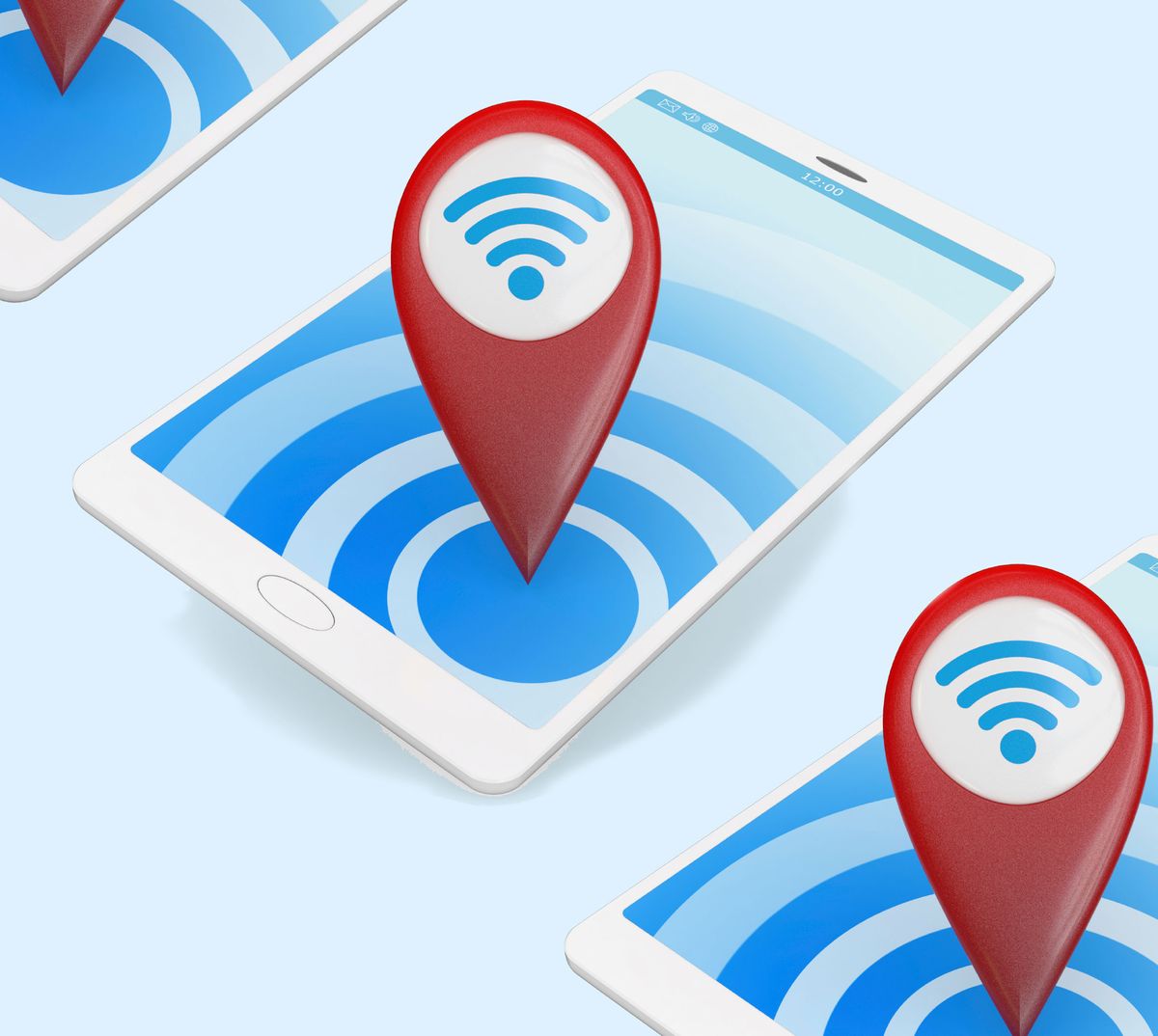Global Positioning System (GPS) satellite technology comes in handy for tracking cruise missiles, doing in-car navigation, and finding secluded restaurants. But step inside an airport, museum, or mall, and you’re often relegated to studying a paper map or asking for directions.
There are positioning systems designed for indoors, but they rely either on GPS-like radio or magnetic beacons, or on mapping the ever-shifting morass of Wi-Fi access points. Such methods have proved expensive to install and difficult to scale. What’s more, these indoor GPS systems are far from accurate enough to let you do cool things like a have a robot follow or avoid you.
Now researchers at MIT’s Computer Science and Artificial Intelligence lab (CSAIL) have developed a way for adjacent Wi-Fi devices, including smartphones, to locate each other within centimeters. The technology, called Chronos, relies on making the devices emulate multi-gigahertz wideband radios.

Chronos starts by having two Wi-Fi devices, a transmitter and receiver, hop simultaneously between all 35 frequency bands in the 2.4 gigahertz to 5.8 GHz Wi-Fi range. At each frequency, the rate at which signals accumulate phase naturally varies. The transmitter skips between bands every 2 to 3 microseconds, with the receiver comparing the phase differences at each step. Chronos can then calculate the time of flight of signals—and thus the distance—between the devices.
If one of the devices has multiple Wi-Fi antennas, as do most modern smartphones and laptops, Chronos can also calculate the angle between the two devices, and locate them in space. In experiments in everyday environments like an apartment or coffee shop, Chronos was able to localize devices to within 65 cm (or about 10 times the accuracy of GPS) using only off-the-shelf Wi-Fi cards.
The MIT researchers, PhD student Deepak Vasisht and Professor Dina Katabi, envisage Chronos being used to count people in smart homes for lighting control, to offer password-free Wi-Fi in cafés (while excluding freeloaders outside), and for robots to operate safely around humans.
“Because Wi-Fi is widely used and in every cellphone, it would be good to use this amazing technology for as many applications as we can,” Katabi told IEEE Spectrum.
There are some limitations, however. Although Chronos can run on existing Wi-Fi devices using just an app (or a firmware upgrade for an access point), each device has to undergo a one-time distance calibration. And because Chronos takes around one-tenth of a second to sweep all the Wi-Fi bands, its accuracy plunges if the devices are moving relative to one another during this initial setup.
So, do you have to place your cellphone on a counter—or on a table in the food court if you’re at the mall—so it’ll be perfectly still? “Walking is fine, but we’re not talking about somebody in a car,” says Katabi. “However for a drone, it’s actually better if it moves. Because its movement is controlled and you know the speed, you can leverage that information in a feedback loop to boost your results.”
Vasisht and Katabi tested Chronos on an AscTec Hummingbird quadcopter fitted with an Intel 5300 Wi-Fi card and a Go-Pro camera. The drone was set to stay 1.4 meters from a netbook, shooting photos of the computer as it moved. Chronos was able to keep the drone within just 4 cm of its programmed distance.
The next step for Vasisht and Katabi is to improve the resolution of Chronos even further, and to start building functions such as geo-fencing, which sets virtual boundaries. The researchers are in discussions with MIT about commercializing the technology. If all goes well, using your phone to find the way to your departure gate, with your robotic carry-on following close behind, could be just a few years away.
Mark Harris is an investigative science and technology reporter based in Seattle, with a particular interest in robotics, transportation, green technologies, and medical devices. He’s on Twitter at @meharris and email at mark(at)meharris(dot)com. Email or DM for Signal number for sensitive/encrypted messaging.



